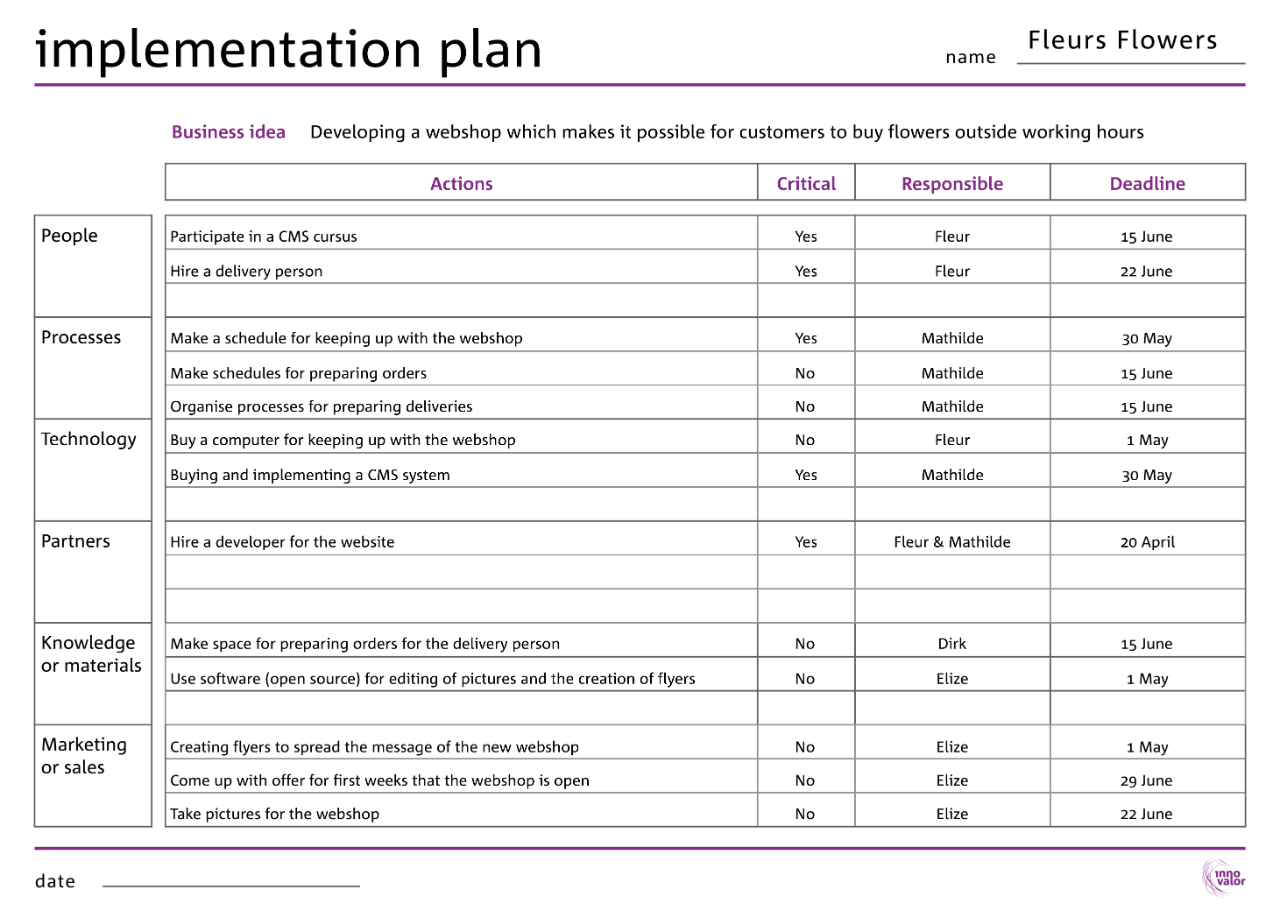Implementation Plan

Tips for use
You can make the Implementation Plan by yourself, but it is more effective if you do this with a group, such as colleagues who will be impacted by the change.
Print the template of the Implementation Plan to use in a brainstorm. Use sticky notes to put something in the Implementation Plan. This way you can easily add or move actions if necessary.
For inspiration, have a look at the example of Fleurs Flowers and learn from this application of the Implementation Plan.
How to use
Your long-term vision for your company contains many possible innovations. An Implementation Plan is made for one of these innovations at a time. The Implementation Plan helps you to define the concrete actions that are necessary to implement the change, put them on a timeline and have a clear idea who’s accountable. Follow the steps to create an Implementation Plan.
Step 1: Describe the innovation
What is your idea and how will it work in your company? Describe what the innovation consists of, the reason for the innovation, and what you want to achieve for your company.
Step 2: Describe the actions that have to be taken
To make the changes a reality, you have to take action. Often a change has an impact in several different business units. Determine the business units that are influenced by the change and define the actions that should be taken to make the change. Make sure to mention specific actions, for example: "Organise sales training", "Customise product catalogue" or "Create a Facebook page".
Describe for each business unit which actions should be taken:
- People: Do you need to hire new employees? Is there a knowledge gap that needs filling? Are you going to outsource activities or acquire new skills?
- Processes: does your innovation require a new way of organising processes? Is a new work method needed? Do you have to set up a new department? Is a different management style necessary?
- Technology: Is the technology you’re currently using good enough for your new business? Or do you have to invest in new technology? Do you need new IT systems?
- Knowledge & materials: can you repurpose existing knowledge and materials? Are you going to acquire new knowledge, for which you need to secure intellectual property? Do you have to buy new materials?
- Partners: do you need new partners? Are you able to distribute your new product or services with your existing partners?
- Marketing & sales: Is market research and promotion necessary? Do the current marketing tools need to be adjusted to the change? Do you want to use other channels or technology for marketing and sales?
Step 3: Determine the critical moments
Some actions will have a big impact on your company. Mark these actions as critical. They probably also require more preparation. Examples of critical moments are actions that:
- can’t be reversed, for example closing a department or dismissing an employee;
- or entail high risk, such as developing new technology that requires a big investment.
Step 4: schedule the actions
Put the actions on a timeline. Note that some actions are dependent on other actions. Ensure that these can be recognised, for example by giving them the same colour. Steps that have no dependencies can be done parallel to others. Ensure that each action has is someone’s responsibility and has a clear deadline.
Note: change is a process. Have regular evaluations of your timeline to accommodate for the changes in your company (people leaving, newly acquired knowledge). Are all actions still in the right order, or do you need to revise the planning?